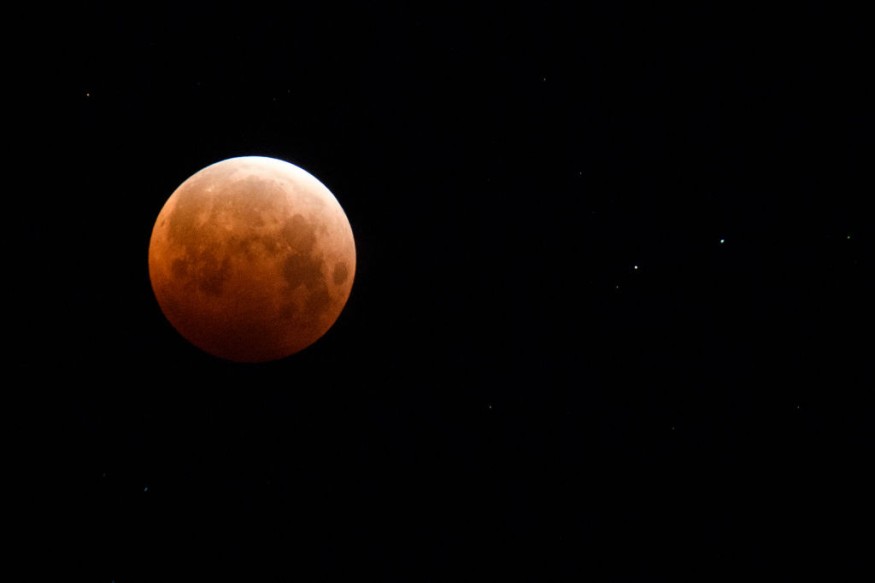Overnight, stargazers were treated to a spectacular and unique sight: a super crimson Moon. Earth's orbit meant that for many minutes after 03:30 GMT on Monday, our planet was squarely between the Sun and the Moon.
The Moon was entirely engulfed in Earth's shadow at the moment, temporarily making it a deep hue of dark red. The color is caused by sunlight passing through Earth's atmosphere and striking the Moon's darkened surface.
A super Moon occurred at the same time as the lunar eclipse. The Moon seems bigger than usual when it is at the closest point in its orbit to Earth.
Super Flower Blood Moon

A full moon is seen during totality of a total lunar eclipse as the moon enters Earth's shadow for a "Super Blood Moon" on May 26, 2021 in Chico, California.
Those looking for the super flower blood Moon had the most pleasing view starting at 03:29 GMT when the full lunar eclipse began, and the spectacle became visible in the Western hemisphere.
The little sunlight reaching the Moon for about an hour and a half had gone through the Earth's atmosphere, coloring it crimson.
Because the Moon was about to set in Europe, the phenomenon was only visible for a portion of that period. However, places in the Americas with clear skies were treated to the complete display.
Dr. Gregory Brown, an astronomer at the Royal Observatory in Greenwich, London, noted ahead of the event, "You'll be witnessing every sunrise and every sunset occurring around the Earth simultaneously. All of that light will be projected onto the Moon."
"A red ring would run around the perimeter of our globe if you were an astronaut standing on the Moon gazing back towards Earth," he told the BBC.
Blood Moon
A total lunar eclipse with a deep red blood moon crossed the night sky Sunday night into Monday morning, providing a stunning, multi-part display for stargazers.
At approximately 9:30 p.m. The Moon began to fall into Earth's shadow about ET. It achieved totality - or completely under Earth's shadow - in around two hours and lingered there for 85 minutes.
Instead of it becoming black, the Moon glowed a vibrant crimson.
The Sun shining straight on Earth travels through the atmosphere and is reflected onto the Moon, giving it a crimson hue during the eclipse.
"This similar action is responsible for the reddish-orange hue of sunrises and sunsets," NASA notes.
What is a Lunar Eclipse?
The Earth blocks sunlight from reaching the Moon, resulting in a shadow on the lunar surface during a lunar eclipse. A total lunar eclipse requires the Earth to be correctly positioned and aligned between the Sun and the Moon. During a lunar eclipse, the sun-blocking Earth creates two shadows on the Moon: the umbra is a complete, dark shadow, and the penumbra is a partial, outer shadow.
The Moon assumes a rusty red tint during a total lunar eclipse, gaining the term "blood moon," caused by sunlight interacting with Earth's atmosphere.
In contrast to the special eyewear required to observe a solar eclipse, no special equipment is required to view the total lunar eclipse on Sunday night - walk outdoors, gaze up, and enjoy. On the other hand, binoculars or a tiny telescope will reveal the features on the lunar surface.
For more Space news, don't forget to follow Nature World News!
© 2025 NatureWorldNews.com All rights reserved. Do not reproduce without permission.





